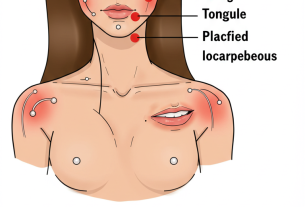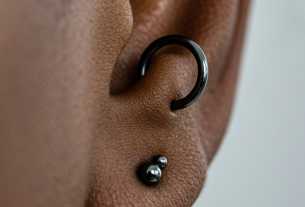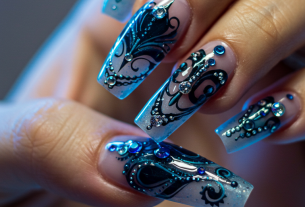The Ultimate Guide to Understanding Piercing Charts: Everything You Need to Know
Are you considering getting a new piercing but feeling overwhelmed by the options? You’re not alone! With so many types of piercings, it can be difficult to know where to start. This guide will take you step by step through the world of piercing charts, explaining everything from anatomy to aftercare and the best jewelry for each piercing. Whether you’re new to body piercings or a seasoned enthusiast, this guide is designed to provide clarity and insights that will help you make an informed decision and enjoy your piercing journey.
What is a Piercing Chart?
A piercing chart is a visual representation that maps out the various types of piercings that can be done on different parts of the body. It typically includes detailed drawings of the body and face, highlighting specific areas where piercings can be placed. Piercing charts are an excellent tool for anyone looking to understand the different piercing options available, the anatomy of the area, and how certain piercings can impact the overall look.
When you look at a piercing chart, you’ll see options for ear piercings, facial piercings, body piercings, and even genital piercings. These charts are categorized by different regions, so you can easily pinpoint the piercing you’re interested in. Many piercing charts are divided into sections such as:
- Ear Piercings: Including lobe piercings, helix, tragus, conch, and more.
- Facial Piercings: Nose piercings, eyebrow piercings, lip piercings, and more.
- Body Piercings: Navel, nipple, dermal piercings, etc.
Having a piercing chart in front of you helps clarify any confusion and makes the decision-making process much easier.
The Different Types of Piercings
One of the best things about piercings is the variety. Depending on the area of the body you want to enhance, there are different types of piercings to choose from. Here’s a closer look at some of the most popular types of piercings, as featured in most piercing charts:
1. Ear Piercings
Ear piercings are the most common type of piercing and can be found in a wide variety of locations around the ear. Some of the most popular ear piercings include:
- Lobe Piercing: The traditional ear piercing in the soft part of the ear. It’s the most common and easiest to heal.
- Helix Piercing: Located on the upper cartilage of the ear. It’s a popular choice for those looking to add a bit of edge to their look.
- Tragus Piercing: A small piercing on the cartilage just above the ear canal. It’s unique and subtle but still packs a punch in terms of style.
- Conch Piercing: A piercing that goes through the cartilage in the center of the ear. This can be a bold choice, especially when adorned with larger jewelry.
- Industrial Piercing: A more complex piercing that connects two parts of the ear with a barbell.
2. Facial Piercings
Facial piercings can dramatically change the way a person looks. They are also one of the most versatile types of piercings because they can be subtle or bold, depending on your style and preferences. Common facial piercings include:
- Nose Piercing: One of the most popular facial piercings. This includes nostril piercings and septum piercings.
- Eyebrow Piercing: Usually done above the eyebrow, this piercing adds a touch of rebellious flair.
- Lip Piercing: This category includes various piercings such as Monroe (on the upper lip), Medusa (above the upper lip), and labret (below the lower lip).
- Navel Piercing: A classic choice that enhances the belly button area, this piercing is popular for summer and beach looks.
3. Body Piercings
Body piercings are not limited to the ears and face. You can also opt for piercings in other areas of your body, including the torso, arms, and even genitals. Popular body piercings include:
- Nipple Piercing: A piercing that enhances the chest area. It’s both aesthetically appealing and functional, as it can also increase sensation.
- Dermal Piercings: Single-point piercings that are implanted under the skin. Dermals can be placed almost anywhere on the body, from the face to the back of the neck.
- Belly Button Piercing: A popular choice for individuals looking to adorn their midriff area. This type of piercing is often seen in fashion and is relatively low-maintenance.
Choosing the Right Piercing for You
When selecting a piercing, it’s important to consider not only your aesthetic preferences but also your lifestyle and pain tolerance. For example, if you’re a beginner, you might want to start with an ear or nose piercing. On the other hand, if you’re looking for something more bold and unique, a dermal piercing or industrial piercing might be more up your alley.
Pain and Healing: What to Expect
Before committing to a piercing, it’s crucial to understand the pain level and healing time associated with each type. Piercings done in areas with less cartilage, like the earlobe, tend to hurt less than those done in more sensitive areas, like the nose or cartilage piercings.
Here’s a general overview of the pain levels and healing times for some common piercings:
- Lobe Piercing: Pain level – Low; Healing time – 6 to 8 weeks.
- Tragus Piercing: Pain level – Moderate; Healing time – 3 to 6 months.
- Navel Piercing: Pain level – Moderate; Healing time – 6 to 12 months.
- Eyebrow Piercing: Pain level – Moderate; Healing time – 2 to 4 months.
- Nose Piercing: Pain level – Low to moderate; Healing time – 3 to 6 months.
Aftercare: How to Properly Care for Your New Piercing
Proper aftercare is crucial to ensure your piercing heals well and avoids complications like infections. Here are some general aftercare tips:
- Clean your piercing regularly with a saline solution or piercing-specific cleaner.
- Avoid touching your piercing with dirty hands to reduce the risk of infection.
- Avoid swimming in pools or hot tubs until your piercing has fully healed.
- Do not rotate or twist the jewelry in the piercing, as this can cause irritation and delay the healing process.
Choosing the Right Jewelry
Selecting the right jewelry is key to the overall look of your piercing. Whether you’re getting a nose ring, lip stud, or helix hoop, the jewelry you choose can enhance the aesthetic of your piercing. It’s essential to start with high-quality jewelry made of materials that are less likely to cause irritation, such as titanium, niobium, or surgical steel.
FAQ: Frequently Asked Questions About Piercings
Q1: How long does it take for a piercing to heal?
A1: Healing time depends on the type of piercing. For example, lobe piercings typically heal in 6 to 8 weeks, while cartilage piercings may take 3 to 6 months or more.
Q2: Can I change the jewelry immediately after getting a piercing?
A2: No, it’s important to let your piercing heal before changing the jewelry to avoid complications. Wait until your piercing is fully healed (as advised by your piercer) before switching to new jewelry.
Q3: Are piercings safe?
A3: Piercings are generally safe when performed by a professional. However, improper aftercare or using poor-quality jewelry can lead to complications like infections or scarring.
Q4: Do certain piercings hurt more than others?
A4: Yes, some piercings are more painful than others. For example, cartilage piercings (such as a helix or tragus) tend to be more painful than earlobe piercings.
Q5: Can I get a piercing if I have sensitive skin?
A5: If you have sensitive skin, it’s important to consult with a professional piercer. They may recommend hypoallergenic jewelry made from materials like titanium or niobium to minimize irritation.
Conclusion
Piercings are a fantastic way to express your individuality and enhance your personal style. Whether you’re considering a subtle earlobe piercing or a bold facial or body piercing, understanding the different types of piercings and their healing processes is crucial for making the right choice.
By following proper aftercare and choosing quality jewelry, you can enjoy a beautiful, well-healed piercing for years to come. If you’re ready to take the plunge and get your next piercing, refer to a piercing chart to explore all the possibilities and make an informed decision.
If you found this guide helpful and want more piercing tips, news, and updates, don’t forget to subscribe to our newsletter! You’ll receive exclusive content and expert advice directly in your inbox. Join our community today!
PAVOI 14K Gold Plated Solid 925 Sterling Silver Post Cubic Zirconia Stud Flat Back Earrings for Women | Cartilage Earring | Helix Piercing Jewelry | Small Stud Earrings for Women
$12.95 (as of August 14, 2025 09:25 GMT -03:00 - More infoProduct prices and availability are accurate as of the date/time indicated and are subject to change. Any price and availability information displayed on [relevant Amazon Site(s), as applicable] at the time of purchase will apply to the purchase of this product.)
Receive tips, news and exclusive offers! Sign up for our newsletter now!






